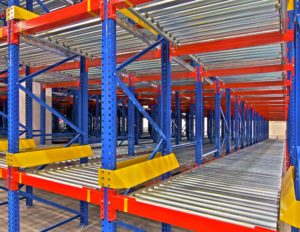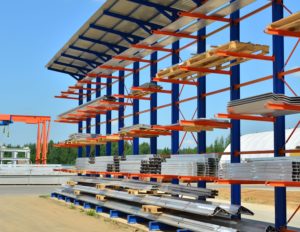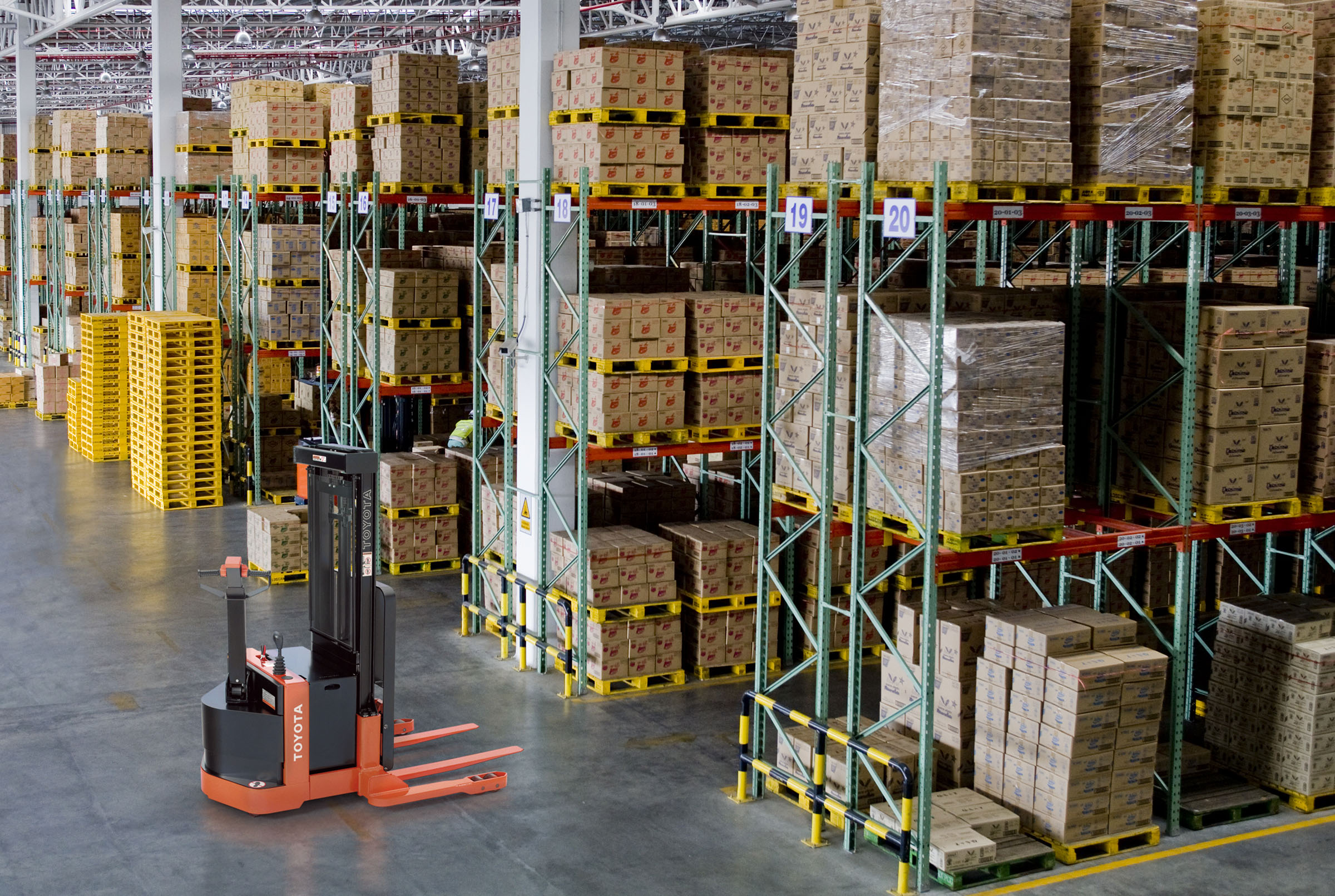There are many different warehouse storage systems, and almost all of them use pallet racking in one way or another. Pallet racking is a set of upright frames and beams to keep products safely stored in boxes or pallets. There are five common types of pallet racking. Let’s explore the advantages and disadvantages of each one.
Drive-In/Drive-Thru Pallet Racking
Drive-In/Drive-Thru pallet racking systems allow forklift operators to deliver and retrieve product from only one side, otherwise known as Last-In-First-Out (LIFO), or deliver the product on one side and retrieve from the other, known as First-In-First-Out (FIFO).
Advantages of Drive-In/Drive-Thru Pallet Racking:
- Simple set up
- Efficient
Disadvantages of Drive-In/Drive-Thru Pallet Racking:
- No easy access to internal pallets
- It cannot be easily modified to accommodate larger or smaller pallets
- A challenging operating environment for forklift drivers
Selective Pallet Racking

Selective pallet racking systems feature either single or double deep racking.
Advantages of single deep pallet racking:
- Flexible and low cost
- Accessible from every angle
- Great for companies with many SKUs
Disadvantages of single deep pallet racking:
- Poor space utilization
- Need forklifts to access vertical storage
Double deep racking is for companies that value storage density over access.
Advantages of double deep pallet racking:
- Comparable in cost to single deep racking
- Better space utilization
Disadvantages of double deep pallet racking:
- Requires additional labor to access pallets trapped in the middle
- Requires forklifts with double deep attachments
Pallet Flow Racking

Pallet Flow Racking uses a rail or conveyor system to store pallets 20 or more deep. The typical configuration feeds pallets in one end and retrieves pallets from the other.
Advantage of pallet flow racking:
- Provides the density of FIFO storage usually only possible with drive-thru systems, without the challenges of driving into the rack system
Disadvantages of pallet flow racking:
- More expensive than single deep or drive-thru racking systems
- Requires quality pallets to prevent product damage
Pushback Pallet Racking
Pushback Pallet Racking uses carts installed in the racks to provide high storage density. This type of system can store pallets up to six deep.
Advantage:
- Provides deep storage for medium turnover products
Disadvantage:
- More expensive than other warehouse storage systems
Cantilever Pallet Racking 
Cantilever Pallet Racking is a custom racking system explicitly designed for the products they support. This system is for furniture, lumber companies, and other facilities with large, cumbersome products.
Advantage:
- Custom built for your specific needs
Disadvantage:
- Most expensive option
Changing your warehouse storage or pallet racking system requires forethought and planning. Let our team of experienced material handling experts design the proper warehouse storage and distribution system for your unique needs.
Want more information about optimizing your warehouse with Toyota? Contact us for a free consultation!
Tags: warehouse solutions
